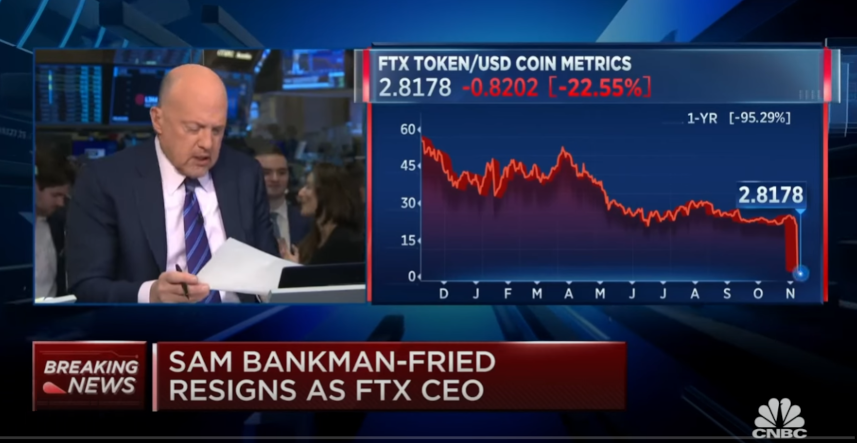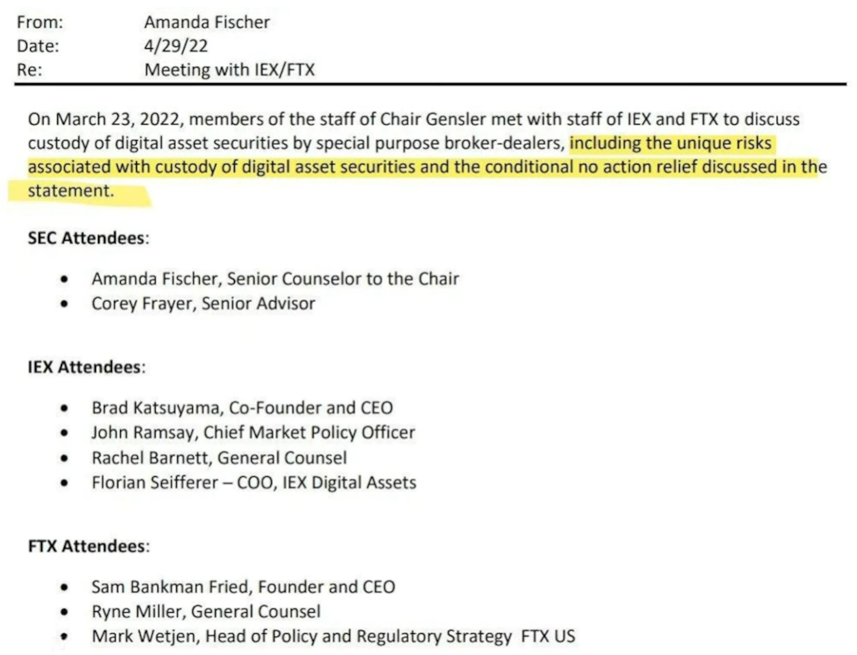What's in a Name
What’s in a name? Some names are long and some short. Some are descriptive while others are cryptic. It is often the case that the most famous (or infamous) amongst us are known by nicknames; short hands as it were. Names such as Einstein, Bluebeard, Cher, Hitler, and Madonna are instantly recognizable without any additional information. But even nicknames are too long in today’s ‘fast-paced’, digital world and the primary players in this month’s drama have only initials to mark their existence: SBF and CZ.
For those living under a financial rock, SBF is an abbreviation for Sam Bankman-Fried and CZ for Changpeng Zhao. SBF, was until recently, the CEO (yab – yet another abbreviation) of the now bankrupt cryptocurrency exchange FTX, at one time the second-largest cryptocurrency exchange in the world. CZ is the current CEO of the largest cryptocurrency exchange in the world Binance.
The story of the interplay between SBF and CZ, of SBF and his, admittedly, polyamorous girlfriend Carolyn Ellison and the ultimate loss of, at this point, tens of billions of dollars has been ably chronicled many outlets. The story of the whole sordid details can go on for hours and, indeed, there are many pieces on the FTX collapse and more are being written at an ever-increasing pace.
But only the highlights, taken from perhaps the single best overview by ColdFusion TV, in their short film The FTX Disaster is Deeper Than you Think, matter for this analysis. In that approximately 30-minute documentary, they assert the following points:
- SBF graduated from MIT in 2014 and started at Jane Street Capital.
- While at Jane Street, he discovered an arbitrage opportunity that allowed him to buy Bitcoin in the US that he subsequently sold in Japan. There he also met a Stanford graduate by the name of Caroline Ellison.
- In 2017, he used the profits he derived to found Alameda Research, a company run by him and his MIT buddies and associates from Jane Street, including Caroline.
- Alameda promised 15% annualized returns to get customers in the door.
- In 2019, he created FTX, cryptocurrency derivatives exchange that functioned much like a bank, providing a place for owners to store and exchange cryptocurrencies and tokens for a fee. Clients were offered a discount if they stored their money in a token called FTT, which was made by FTX.
- The FTX token was essentially money made up by FTX:
- Cory Klippsten, CEO of Swan Bitcoin was quoted as saying: ““It’s fascinating to see that the majority of the net equity in the Alameda business is actually FTX’s own centrally controlled and printed-out-of-thin-air token.”
- To quote the documentary: “In essence, Sam created a coin, artificially attributed value to it, and then used it as collateral to finance his projects. It was very, very shady.”
- Caroline had little experience in finance and lost a lot of money as CEO of Alameda on bad trades and risky bailouts of small crypto firms.
- SBF used FTX customer dollars, totally about 4 billion, as loans to Alameda to cover the gambles that failed to materialize.
- SBF would then get ‘knee-deep’ into politics buying political influence as a way to shape US crypto regulatory structures to favor FTX and shut out his competitors.
- A single tweet from CZ on November 6, 2022 would start a chain reaction that would collapse SBF’s empire.
- Binance had initially bought a $100 million stake in FTX; a stake that was later repurchased by FTX for $2 billion dollars mostly in the form of FTT
- CZ didn’t like SBF’s political maneuvering stating “we won’t support people who lobby against other industry players behind their backs” and tweeted that Binance would liquidate all of its FTT; this triggered a general sell-off that revealed the lack of solvency in FTX and Alameda Research
- Binance then agrees to buy FTX only to back out a few days later when investigations reveal just how
- FTX would declare bankruptcy, with Alameda and over a 130 additional companies sinking along with it.
With these preliminaries out of the way, the economics analysis can begin. There seems to be two major morals from this story: 1) the presence of moral hazards typically results in disaster and 2) regulations as barriers to entry have consequences. Let’s look at each of these in turn.
It is hard to deny that SBF wasn’t awash in moral hazards. First there was the overall grooming and institutional hubris surrounding MIT, Stanford, and other ‘high-powered’ schools that encourages the students and subsequent graduates to think that they are smarter than everyone else and that the rules are for those lesser people and not them. Second, FTX was surrounded by celebrities and sycophants who talked up the wiz-kids at Alameda and FTX. One investment house even cited the fact that SBF was playing the game League of Legends during an investment call. In addition, many institutional investors were happy to not ask questions about FTX using their own made-up FTT token as collateral. Finally, there is the connections between SBF and Caroline Ellison (polyamorous lovers), Caroline Ellison and MIT economics professor Glenn Ellison (father-daughter), Glenn Ellison and SEC Head Gary Gensler (boss to former employee – Gensler was an MIT economics professor), and Gary Gensler to SBF (regulator to regulatee).
If the Cold Fusion documentary is to be believed, there are credible allegations that the SEC provided FTX with a conditional no action relief, basically meaning that the SEC knew that something was wrong but chose to do nothing.
Economic historians will have to piece together how much of each of these moral hazards contributed to FTX’s collapse but it is clear that because of them SBF and colleagues to threw caution to the end and embraced more risk than they ought to have.
And these risks may have actually never realized and FTX could conceivably dodged a bullet if it weren’t for the fact that Binance pull the rug from under them. And the reason for this move was that SBF was currying political favor to lobby for regulations that, on the surface, would keep crypto safe but which, in reality, would have created a nearly unmeetable compliance burden for existing firms and an essentially insurmountable barrier to entry for new ones.
So, there you have it. At the end of the day, with all the technical terms and digital façade removed, the story of the collapse of FTX and Alameda Research comes down to well-known names for the old-fashioned economic forces of moral hazards and regulatory effects along with a plane, garden-variety embezzlement. Speaking of names, maybe, going forward, SBF should stand for Sam Bankman-Fraud.




